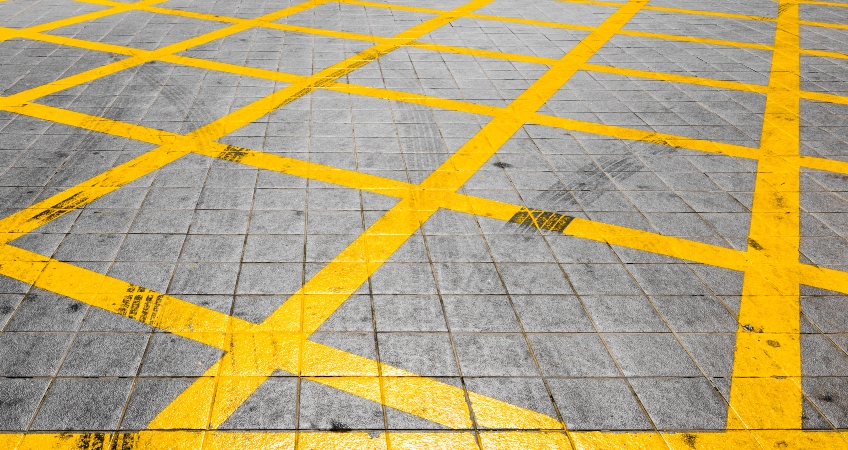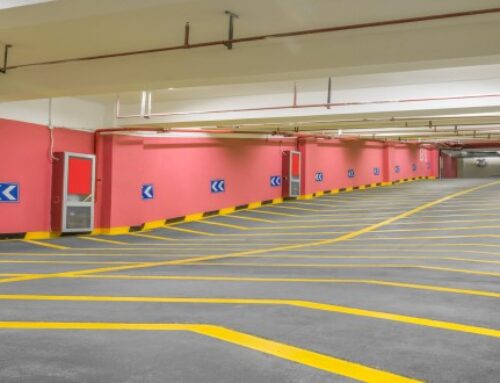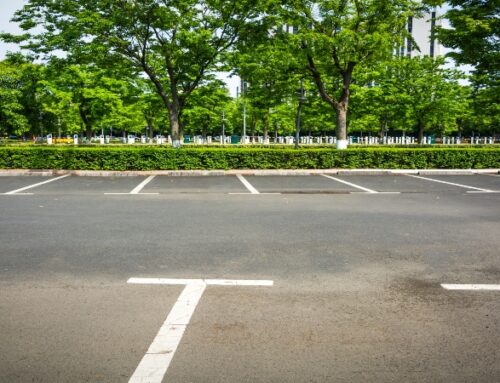Ensuring road safety and managing traffic flow requires the fundamental aspect of road line marking. However, common mistakes occur during line marking, leading to confusion and accidents. One common mistake is the use of the wrong type of paint. Using high-quality, durable road marking paint that can withstand weather conditions and heavy traffic is crucial. Another mistake is the improper spacing between the line markings, which can confuse drivers. Uneven or crooked lines also pose a danger to motorists. It is essential to hire professional line marking services to avoid these mistakes. Proper line marking equipment and training are necessary to achieve optimal results. Properly maintaining the markings is also essential to ensure their continued effectiveness. Regular inspections and touch-ups can prevent fading and deterioration. By avoiding these common mistakes, road markings can provide clear guidance to drivers, promote road safety, and improve traffic flow.
Mistakes in Marking Road Lines That Occur Frequently
Mistakes in marking road lines are a common occurrence that often results in confusion for drivers. One of the most frequent errors made when marking road lines is incorrect positioning, resulting in lines that are too close together or too far apart. This can lead to confusion for drivers, especially on highways and in poor weather conditions. Additionally, line thickness can vary and may need to be more consistent, causing further confusion. Other mistakes include using the wrong color or not ensuring that lines are appropriately painted, resulting in fading or peeling over time. Addressing these issues can improve safety for drivers and reduce the risk of accidents on the road.
Mistake #1: Incorrect width and length of markings
One of the common mistakes in line marking is incorrect width and length. Inaccurate measurements can lead to too thin or too thick lines, making it difficult for drivers to see them or align their vehicles properly. Similarly, long lines may overlap with other lanes or spaces, causing confusion and potential hazards. Proper measurement based on traffic volume and length available is crucial to ensuring that line markings provide clear guidance and direction to drivers. Precision is vital, and it is essential to double-check measurements before beginning the road painting process.
Mistake #2: Poor color contrast
A mistake that is frequently made is poor color contrast. This can lead to confusion and even accidents. When selecting colors for line marking, choosing contrasting shades that can easily be distinguished from each other is vital. For example, using yellow on a white surface or light blue on a grey surface may not provide enough contrast, making it difficult for drivers or pedestrians to see the markings. Therefore, it is imperative to carefully consider color choices for line marking to ensure they are easily visible and identifiable for all.
Mistake #3: Inconsistent thickness
Inconsistent thickness is a common mistake in line marking. This happens when the lines need to be painted with a consistent stroke or pressure, leading to varying degrees of thickness. Inconsistent lines can be confusing and challenging to follow, leading to potential safety hazards and confusion for drivers or pedestrians. It’s essential to use proper line marking techniques and equipment to ensure consistent thickness and accuracy. Regular maintenance and repainting of line markings can also prevent inconsistencies and maintain visual clarity on the road.
Mistake #4: Using the wrong materials
Using the wrong materials for pavement marking is a big mistake that can cause significant problems. The materials used for pavement marking should be selected carefully to ensure the longevity of the marking. Using the wrong materials can result in the marking being worn away quickly or fading quickly. This could pose a hazard to drivers and pedestrians as it would be difficult to differentiate between the markings. Therefore, choosing suitable materials for pavement marking is crucial to ensure road safety.
Mistake #5: Not adhering to safety standards
Following safety standards is crucial, which can lead to severe consequences—not adhering to safety standards can result in injury, financial losses, or even loss of life. The Victoria Govt rule has established guidelines and regulations to ensure the safety for workers and the public. Businesses must follow these rules and protocols to protect their employees and clients, reduce liability and maintain their reputation. Ignoring safety standards is a mistake that can have far-reaching adverse effects.
How to Avoid Common Road Line Marking Mistakes
To avoid standard road line marking mistakes, it’s essential to seek guidance from line marking experts. These professionals can help ensure that all necessary regulations and safety standards are met during the marking process. Some common mistakes that can be prevented include using incorrect paints, improper placement or spacing of lines, and forgetting to refresh faded markings. Regular inspections and maintenance can also aid in avoiding line marking flaws, which can improve driver safety and help prevent accidents on the road.
Choosing the right materials
Professional line marking is a vital aspect of maintaining safe and well-organized roadways. Choosing suitable materials for road line marking can significantly influence the effectiveness and longevity of the markings. Several factors should be considered, such as the type of surface, traffic volume, weather conditions, and the intended purpose of the markings. High-quality paints and reflective coatings are commonly used for road line marking. Different marking materials have advantages and limitations, so choosing the most suitable one for a particular situation requires careful consideration.
Using the right equipment
The right equipment for road line marking is essential for a precise and long-lasting application. Pavement markers, such as thermoplastic, paint, or tape, require specific tools and machines to ensure effective implementation. Line marking services should use efficient, reliable, and durable equipment to complete the job quickly and accurately. Choosing the right equipment will also assist in reducing potential mistakes, reducing downtime, and ensuring a safer environment for motorists and pedestrians. Invest in the best possible tools to achieve optimal results when line marking on roads.
Proper application techniques
Proper application techniques are essential for road line marking to ensure maximum road safety. Road marking experts suggest using precision equipment to apply markings so that they are straight, of the correct width and with no gaps. The equipment used should be adequately maintained and regularly calibrated. It is also important to use high-quality paint that is weather-resistant and can withstand heavy traffic. Proper drying time should be allowed for the markings to ensure they are durable and long-lasting. Additionally, it is crucial to follow regulations, guidelines and safety standards during road line marking for the safety of all road users.
Maintenance and upkeep
Maintaining road line markings is crucial for ensuring safety on the road. Road line markings guide drivers, helping them stay in their lanes and avoid accidents. Regular upkeep of these markings is the responsibility of the road line marking contractor. They must ensure the lines are visible and not fade or wear away quickly, especially during bad weather conditions. Proper maintenance of road line markings can make a significant difference in road safety and help prevent vehicle collisions.
Importance of proper road line marking
Proper road line marking is crucial for the safety of drivers and pedestrians. Clear and visible lines help guide drivers on how to navigate the road, prevent accidents due to confusion, and reduce the risk of collisions. By adhering to proper road line markings, drivers can accurately determine each vehicle’s space, ensuring safer travel for all.
- Safety: Road line markings are critical in guiding drivers and pedestrians safely through roadways. Clear and visible markings help drivers to stay in their lanes, avoid collisions and prevent accidents.
- Traffic flow: Properly marked roads help to maintain the orderly flow of traffic. Markings such as arrows and lane designations help drivers to understand where they should be driving and how to navigate through intersections and other areas of congestion.
- Communication: Road line markings communicate essential information to drivers and pedestrians. For example, markings indicating crosswalks, bike lanes, and turning lanes can help pedestrians and cyclists safely navigate intersections.
- Accessibility: Road line markings also play an essential role in making roadways accessible to people with disabilities. Properly marked crosswalks, curb ramps, and parking spaces help ensure that everyone has safe and equal access to the roadways.
- Aesthetics: Properly marked roads also enhance the overall aesthetic appeal of an area. Clear, well-maintained markings help to create a sense of order and cleanliness on the roadways, which can be necessary for the overall appearance of a community.
 Photo Credit: freepik.com
Photo Credit: freepik.com
Hiring a professional road line marking contractor in Melbourne, Victoria
In case you seek a trustworthy all-in-one resolution for expert road line marking services in Victoria’s Melbourne, Infra Projects Group Pvt can provide high-quality services that fit your needs. Our line marking services extend beyond the usual requirements to satisfy your specific needs, including car park line markings. We understand your concern for durability and visibility in road marking, so we use high-quality materials and techniques to ensure long-lasting and visible markings. Trust our experience and range of machines to deliver the perfect finish to your project. Our professionals can handle projects of different types and sizes, ensuring that the final result meets all local and national guidelines for road marking. Contact us today for your road line marking needs.




